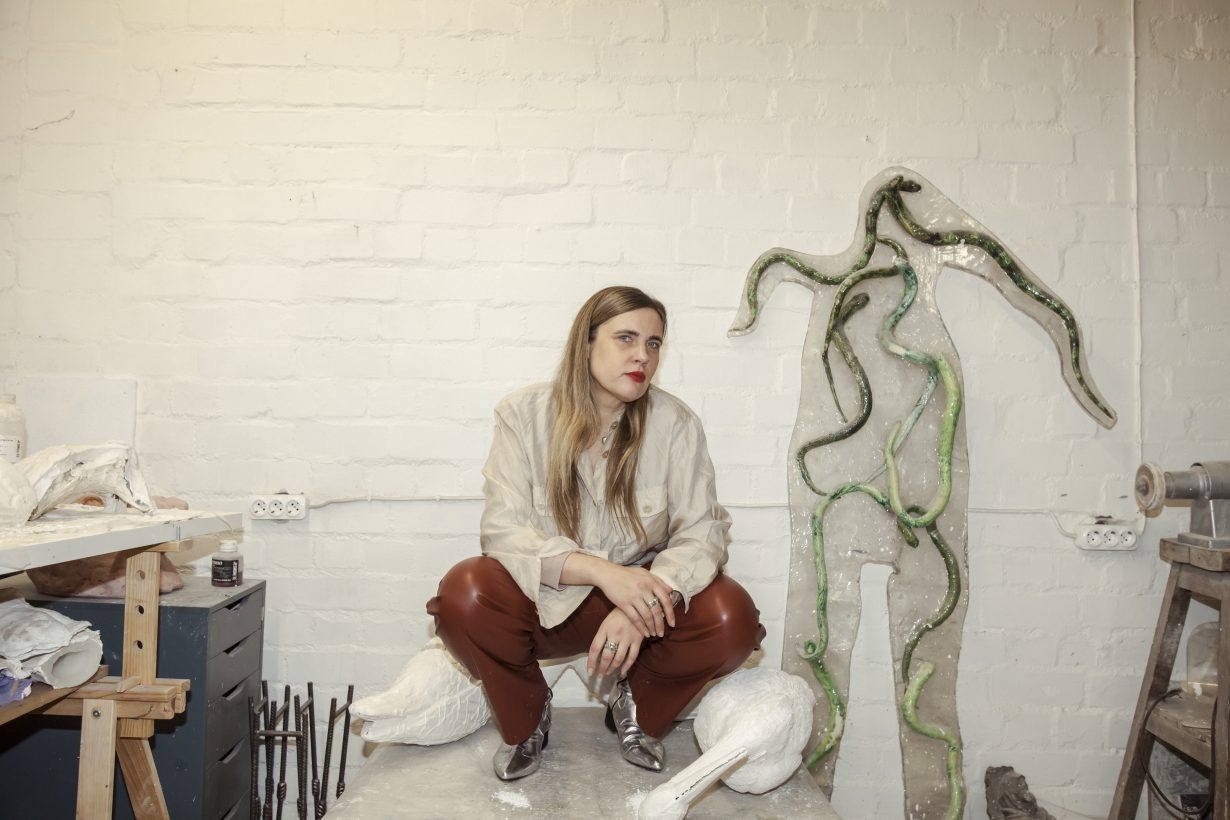ArtReview sent a questionnaire to artists and curators exhibiting in and curating the various national pavilions of the 2024 Venice Biennale, the responses to which will be published daily in the leadup to and during the Venice Biennale, which runs from 20 April to 24 November.
Edith Karlson is representing Estonia; the pavilion is in Chiesa di Santa Maria delle Penitenti in Canareggio.

ArtReview What do you think of when you think of Venice?
Edith Karlson When I think of Venice I think of the soggy smells of the canals, the pink light over the city and the lapping of the water.
AR What can you tell us about your exhibition plans for Venice?
EK The title of the exhibition is Hora Lupi, in other words ‘the hour of the wolf’, which refers to the hour between night and dawn, when most people die and are being born and inexplicable things happen. The exhibition is set in a church, where my largescale installation is put in a dialogue with the original works from the church and contributions from 200 Estonian people, who all gave their little input by modelling a clay head as part of a bigger sculpture group. It holds the feeling of falling – when you can’t turn back anymore but at the same time you don’t know yet what is going to happen. This particular feeling that is a mixture of fear, excitement, unknown and inevitability, sort of like the moment we’re living now.
AR Why is the Venice Biennale still important, if at all? And what is the importance of showing there? Is it about visibility, inclusion, acknowledgment?
EK I guess these days the biennale can be considered as a format that belongs to the previous thinking of the artworld, with its scale, structure and logic, and it is really problematic when we start to measure its effects on environment, for instance. At the same time we still can’t go around it professionally and it is exciting to see so many artists together in this magical city.
I haven’t really been thinking about the importance of the biennale and its visibility while making this exhibition. For me as an artist it is important and a valuable privilege to work on that scale, to have a really good team around me and the luxury of time in my hands. It is rare and it is special.
Since the beginning of this project I chose Venice – not the biennale – as a starting point. The biennale is a specific structure and for sure national pavilions are part of it but Venice is a real city, with real local people living in it, and I want my exhibition to be accessible and exciting for them in the first place. That’s why I am so happy that our pavilion in in Canareggio, I love this area.

Contemporary Art
AR When you make artworks do you have a specific audience in mind?
EK I can’t make art with someone else’s expectations in mind. If I followed a specific audience’s expectations, then I would be very disappointed in myself.
AR Do you think there is such a thing as national art? Or is all art universal? Is there something that defines your nation’s artistic traditions? And what is misunderstood or forgotten about your nation’s art history?
EK Yes, there is such a thing as national art and it’s actually quite trendy in Estonia at the moment. The majority of national art here focuses on folklore. I think not much is known from Estonian art overall in the world, since we are such a small and young country, but it is also good to see that this centralised perspective is shifting a bit. For a long time we have been so used to consider (Western) world art history separate from Estonian and Baltic art history, always comparing ourselves to the mainstream positions, but we are also part of this world, even though we’re living on the edges of Europe.
AR If someone were to visit your nation, what three things would you recommend they see or read in order to understand it better?
EK I would definitely recommend watching Rainer Sarnet’s movie November (2017), which captures the essence of Estonia somehow. Watch it and see. The second thing to do is to get familiar with the terms on wetlands – nature is almost like a religion for an Estonian. And in my opinion Estonia has a very rich and cool alternative music scene! For example there are numerous summer music festivals, such as Saund, which takes place at the beautiful island of Hiiumaa, and my favourite party series, Haigla Pidu.
AR Which other artists have influenced or inspired you?
EK There are many artworks I’m fond of, but I’ve never had a favourite artist; somehow I always get asked that question, and I never know what to answer. All artists are good artists in my opinion, everyone has some interesting work.
AR What, other than your own work, are you looking forward to seeing while you are in Venice?
EK I want to go to Torcello.
The 60th Venice Biennale, 20 April – 24 November